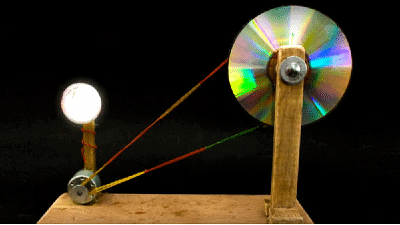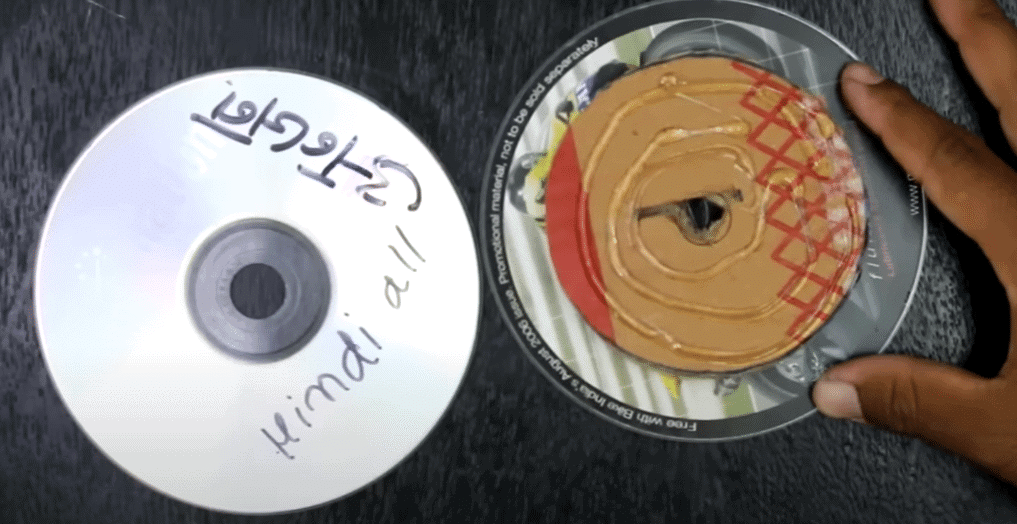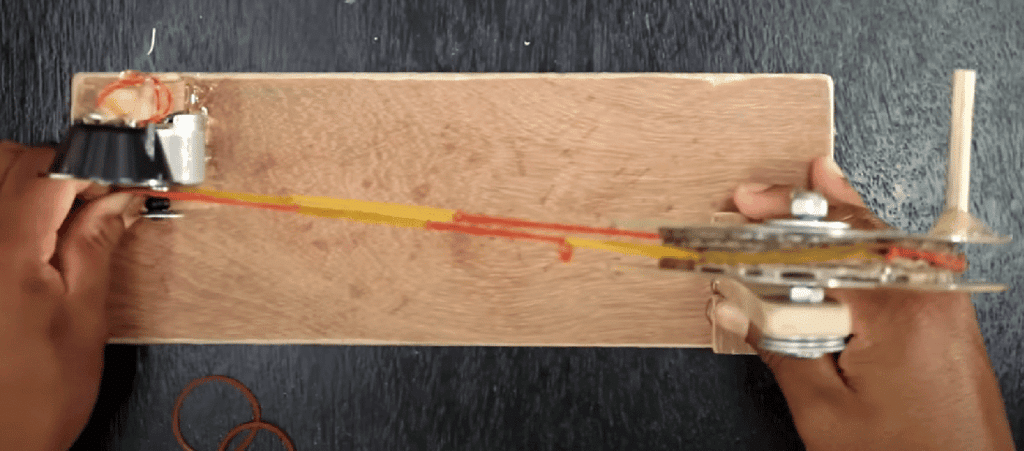School Science Projects Electric Generator | DIY Science Fun: Cool School Projects - Class 6 PDF Download
Introduction
In this experiment, we will construct a basic electric generator using a DC motor and a light-emitting diode (LED). The objective is to understand how mechanical energy can be converted into electrical energy and observe the principles of electricity generation in action.
Materials Required
- DC motor
- Pulley
- Light-emitting diode (LED)
- LED holder
- Nut, bolt, and washer
- Plywood
- Wooden stands
- DIY mat
- Hot melting glue
- Pliers
Concept of Electricity
- Definition: Electricity is energy that comes from the movement of charged particles, primarily travelling through materials known as conductors, like copper wires.
- Everyday Use: We rely on electricity to power various electronic devices, such as cars, washing machines, heaters, and many others.

Types of Electricity
- Static Electricity: This type of electricity occurs when two objects become charged through friction. For example, when a plastic pipe attracts small pieces of paper due to static charge.
- Current Electricity: This involves the flow of electric charge through a conductor. A common instance is when a light bulb is turned on, and the glowing filament indicates the flow of current. Current electricity can be further categorized into direct current (DC) and alternating current (AC).
The DC Motor and LED
- DC Motor:. The DC motor is a crucial part of this project because it generates electricity when its shaft spins. Conversely, it can also function as a motor when we provide electricity to it. The shaft of the DC motor can be easily turned using a simple mechanical setup.
- Light-Emitting Diode (LED): An LED is used in this project to demonstrate electricity generation. When a 1.5-volt LED is connected to the motor, we can observe the production of electricity. It’s important to note that LEDs allow electricity to flow in only one direction.

- Working Principle: By connecting the DC motor and the LED in the right way, we can see how mechanical energy is converted into electrical energy. This project illustrates the basic principles of electricity generation using simple components.
Step-by-Step Instructions
- Step 1: Creating the Wheel
- Collect two old CDs and a piece of circular cardboard.
- Use hot glue to attach the cardboard between the CDs, creating a sturdy wheel.

- Step 2: Setting Up the Base
- Glue a wooden bar to a plywood base, ensuring it can rotate freely.
- Secure a nut and bolt to the CD and wooden bar for added stability.
- Attach a suitable rod to serve as a handle for turning the CD wheel.
- Step 3: Connecting the DC Motor and LED
- Solder the DC motor and LED onto a small wooden block, following the demonstration in the video.
- Use a rubber band wire as a belt to connect the CD wheel to the DC motor's shaft.

- When you start turning the wheel, the LED will light up, indicating the generation of electricity.
Benefits of the Electric Generator Science Project
- Deepening Knowledge: This project helps students grasp the process of electricity generation, focusing on DC motors and the distinction between open and closed circuits.
- Fostering Interest in Renewable Energy: Engaging in this project encourages students to explore renewable energy sources, fostering a mindset geared towards sustainable energy solutions.
Safety Tips for the Project
Safety is of paramount importance when conducting any science project. Here are some tips to ensure a safe experience:
- Wear safety glasses to protect your eyes.
- Handle the soldering rod with care.
- Perform the project under the supervision of parents, teachers, or seniors.
- Take precautions while using hot melting glue to avoid burns.
Conclusion
The Electric Generator Science Project offers a captivating and educational experience for students to delve into the world of electricity generation. By following the step-by-step guide, they can build a working model that demonstrates the principles of a DC motor and the production of electricity. With safety precautions in place, this project ignites curiosity, fosters understanding, and opens doors to further exploration in the realm of science. So, gather your materials and embark on an electrifying journey of discovery!
Alternative Science Fair Project Ideas
If you're looking for more science fair project ideas related to electricity, consider the following:
- Making a Lift using Gear Motor
- Creating Your Own DC Motor
- Building an Earthquake Detector
- Designing a Lungs Model
- Crafting a Homemade Compass
- Generating Electricity from a DC Motor
|
80 videos|60 docs
|
FAQs on School Science Projects Electric Generator - DIY Science Fun: Cool School Projects - Class 6
| 1. What is the basic principle behind how a DC motor works? |  |
| 2. How can I use a DC motor to generate electricity? |  |
| 3. What are some common applications of DC motors in everyday life? |  |
| 4. How does an LED work, and what are its advantages over traditional light bulbs? |  |
| 5. What safety precautions should be taken when working on electric motor and generator projects? |  |






















